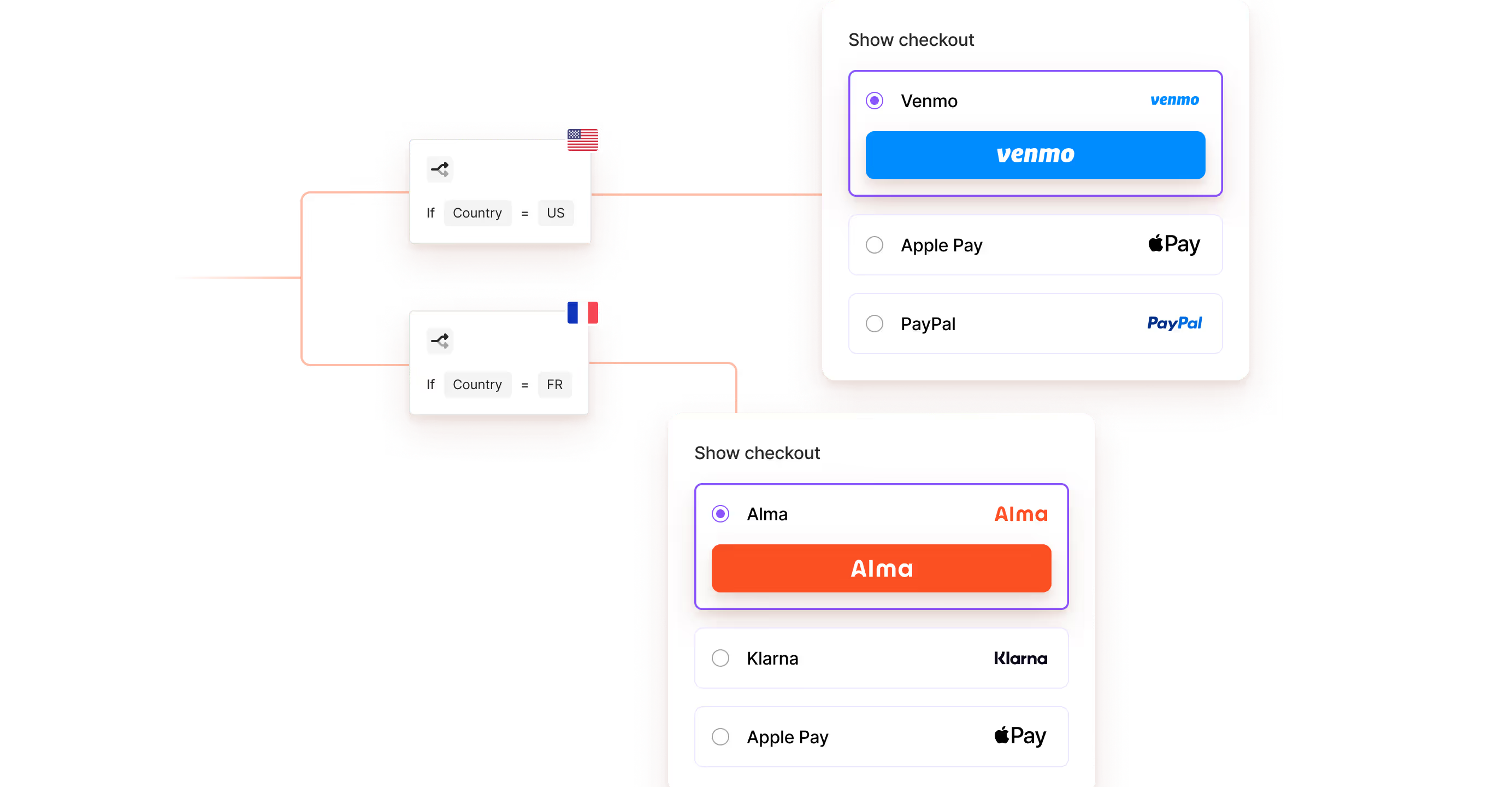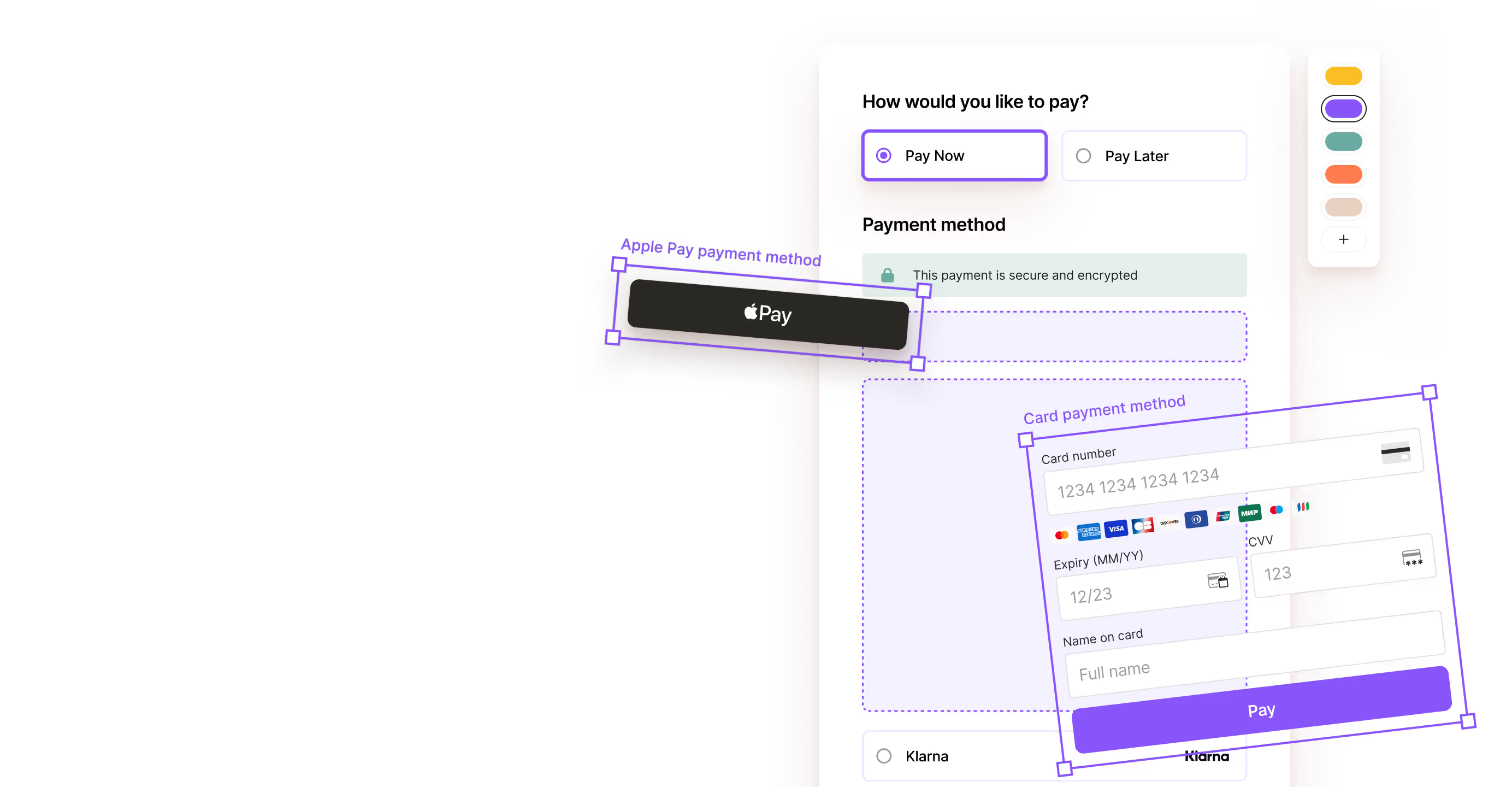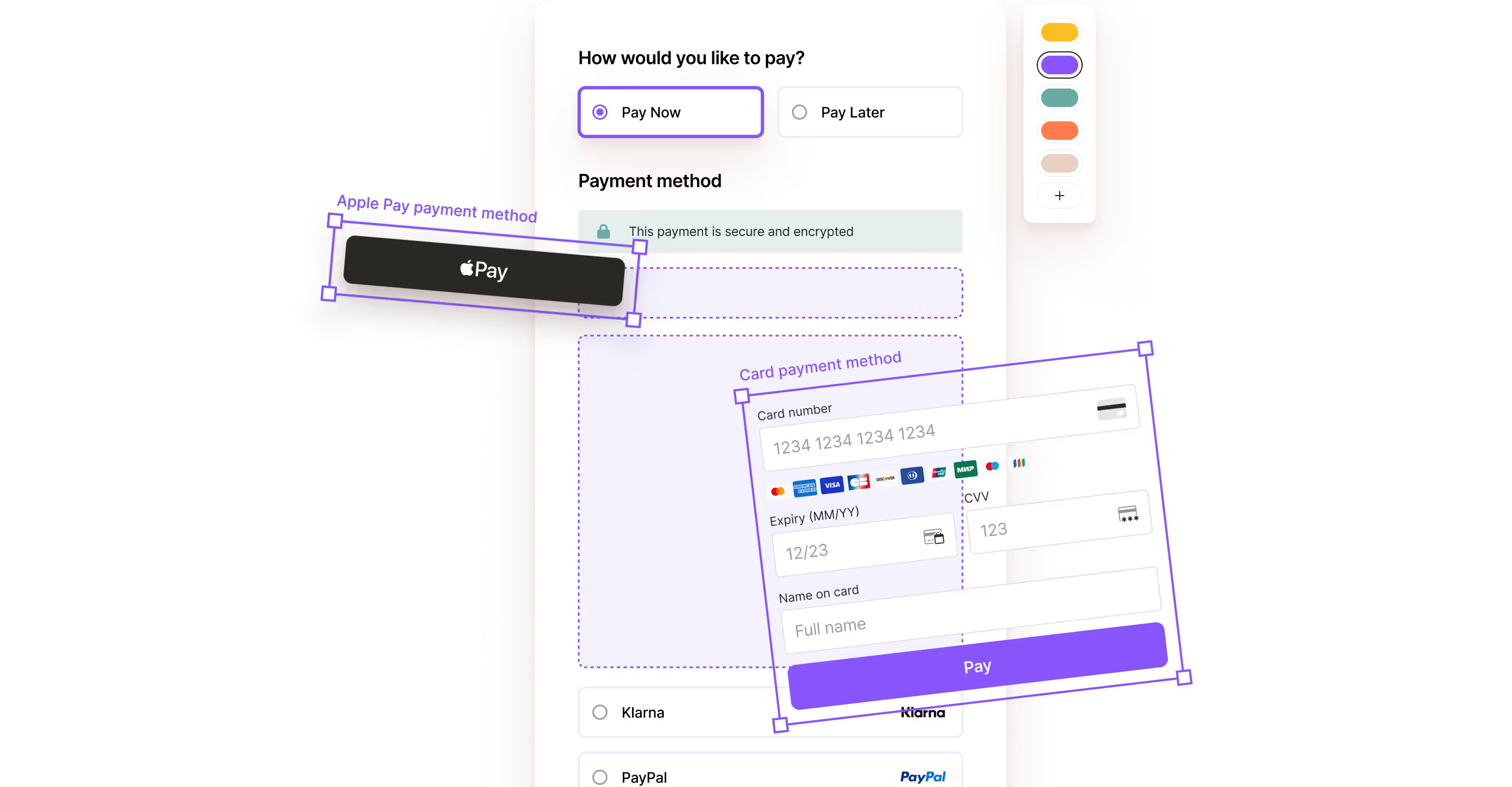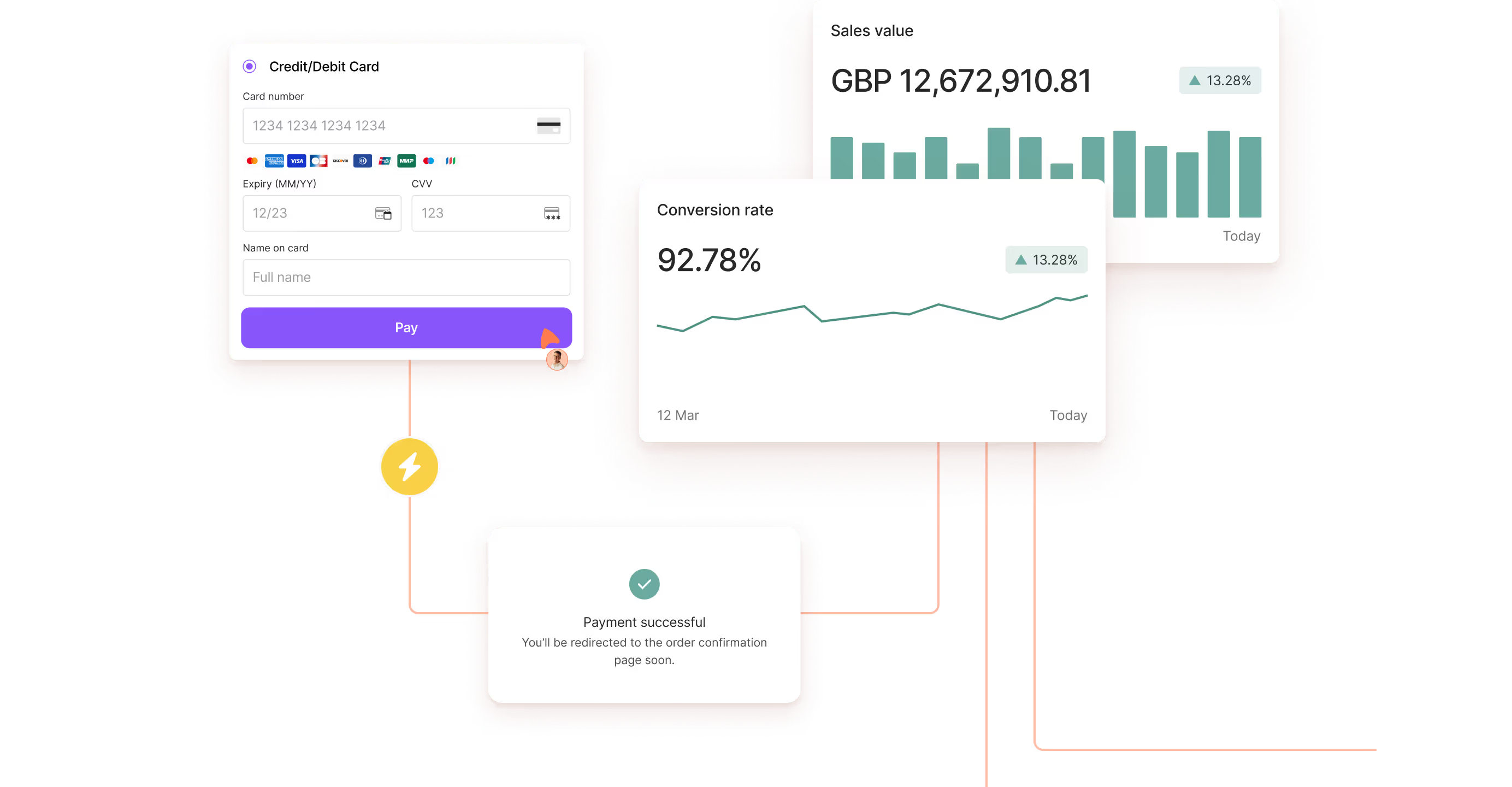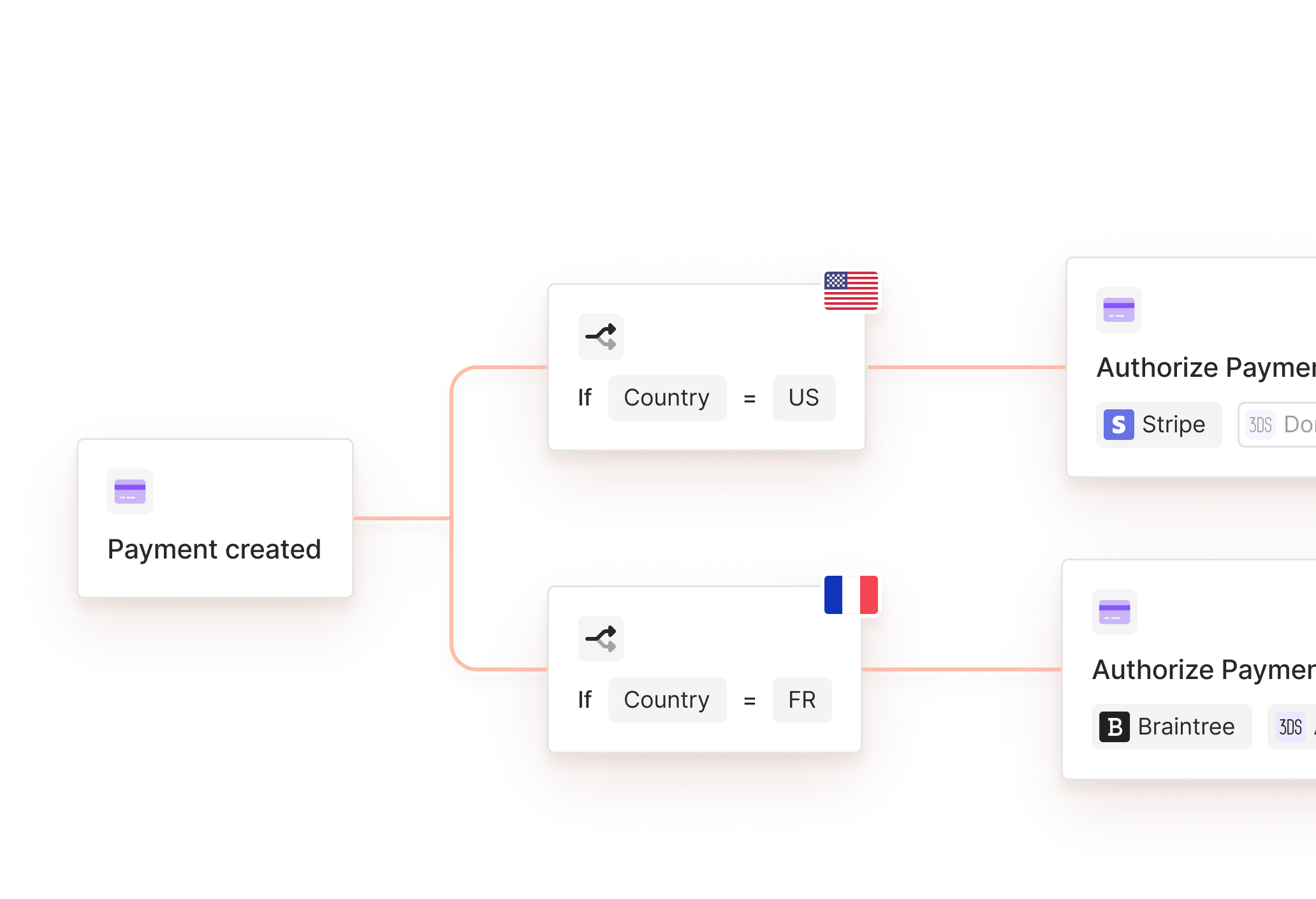Unify your payment services via a single integration
Reduce maintenance overhead. Primer brings simplicity and harmony to your payments through one unified lifecycle. Accept, authorize, respond, and recover payments from hundreds of payment services through one single API.

Unify your payment services via a single integration
Reduce maintenance overhead. Primer brings simplicity and harmony to your payments through one unified lifecycle. Accept, authorize, respond, and recover payments from hundreds of payment services through one single API.




150+
154
32
























Recover payments
A declined transaction doesn't mean it’s the end of the road. Normalize decline and failed status codes for easy reconciliation so you can focus on recovering revenue faster.
Be informed
Be in the know. Get granular visibility into scheme and processor data, account references, and more. Set up webhook notifications so you’re informed whenever anything happens.


"With a single integration, we have total control over our end-to-end payment flows."
Anthony Cugnetto
Head of Product - Core
Features
Integrate once
Ensure consistency and efficiency every step of the way, regardless of the services you use, by using one payment object and unified lifecycle.
Global integrations
Accelerate your product roadmap with one-click apps and integrations. Gain access to more than 100+ global payment services.
Complete visibility
Crack open the black box and get complete visibility into every payment, including raw requests and responses.
Centralized vault
Primer automatically stores and handles processor, acquirer and scheme data to keep up-to-date information and increase approvals.
Avoid duplicates
Primer supports idempotency, enabling you to safely retry a request without risking the user being charged or refunded multiple times.

























Engineered for developer velocity, security, and peace of mind

FAQs
What is a Payment API?
A Payment API is a set of protocols, tools, and definitions that enable all parties involved in the payment flow to communicate. It serves as a bridge between merchants, customers, and financial institutions, facilitating secure and seamless transactions in various digital environments.
How do payment APIs work?
Payment APIs facilitate seamless payment processing by enabling applications to request and handle payments securely. When a transaction is initiated, the merchant's application sends necessary details to the payment API, which then interacts with the payment processor or financial institution to authorize and finalize the transaction. Subsequently, the API relays the transaction outcome back to the merchant application, confirming its success or failure.
What does a Payment API do?
A Payment API streamlines payment acceptance, processing, and management. It handles tasks such as transaction authorization, encryption, and fraud detection, ensuring payment data security. Additionally, it offers features for managing recurring payments, refunds, and reconciliation, empowering merchants with comprehensive control over payment operations. Ultimately, a Payment API enhances user experience and enables businesses to accept payments across different channels and devices securely.


The smartest payment decision you’ve ever made
Connect your favorite payment and commerce services, create beautiful customer journeys and expand into new markets fast.














